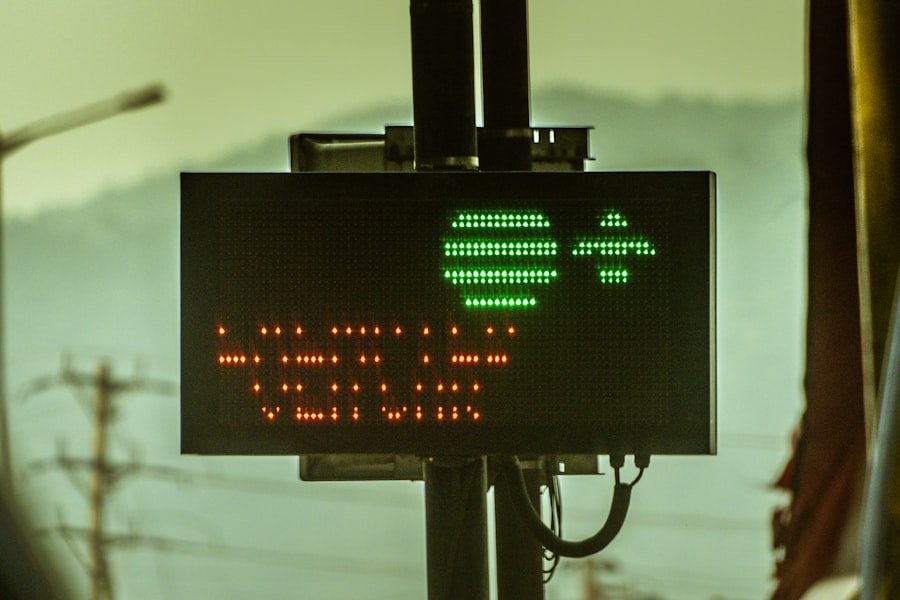Dashboard warning lights serve as critical indicators of a vehicle’s operational status, alerting drivers to potential issues that may require immediate attention. These lights are designed to communicate vital information about the car’s systems, ranging from engine performance to safety features. When illuminated, they can signify anything from minor inconveniences to serious mechanical failures.
Understanding these warning lights is essential for maintaining vehicle safety and performance, as they provide early warnings that can prevent more significant problems down the road. The dashboard of a modern vehicle is equipped with a variety of warning lights, each with its own specific meaning. These lights can be categorized into two main types: warning lights and indicator lights.
Warning lights typically indicate a malfunction or a critical issue that requires immediate action, such as the check engine light or oil pressure warning. Indicator lights, on the other hand, provide information about the vehicle’s status, such as turn signals or high beam indicators. Familiarizing oneself with these lights can empower drivers to take appropriate action when necessary, ensuring both their safety and the longevity of their vehicle.
Key Takeaways
- Understanding Dashboard Warning Lights:
- Dashboard warning lights are indicators that alert drivers to potential issues with their vehicle.
- These lights can vary in color and symbol, each representing a different problem or system in the car.
- Common Dashboard Warning Lights and Their Meanings:
- Some common dashboard warning lights include the check engine light, ABS light, and tire pressure monitoring system (TPMS) light.
- Each warning light has a specific meaning, and it is important for drivers to understand what each one indicates.
- Steps to Take When a Warning Light Appears:
- When a warning light appears, it is important to remain calm and not panic.
- Drivers should refer to their vehicle’s manual to understand the meaning of the warning light and take appropriate action.
- Checking and Troubleshooting Dashboard Warning Lights:
- Drivers can perform basic checks such as checking the gas cap, engine oil, and coolant levels to troubleshoot some warning lights.
- If the issue persists, it may be necessary to seek professional help to diagnose and fix the problem.
- Dealing with Engine Warning Lights:
- The check engine light is one of the most common dashboard warning lights and can indicate a range of issues from minor to severe.
- Drivers should not ignore the check engine light and should have their vehicle inspected by a professional as soon as possible.
Common Dashboard Warning Lights and Their Meanings
Among the most frequently encountered dashboard warning lights is the check engine light, which can illuminate for a myriad of reasons ranging from a loose gas cap to more severe engine malfunctions. This light is part of the onboard diagnostics system and serves as a prompt for drivers to investigate potential issues. Ignoring this light can lead to decreased fuel efficiency and increased emissions, not to mention the risk of more extensive engine damage if the underlying problem is severe.
Another common warning light is the oil pressure warning light, which indicates that the oil pressure in the engine is either too low or too high. Low oil pressure can result from insufficient oil levels, a failing oil pump, or a clogged oil filter. Conversely, high oil pressure may indicate an obstruction in the oil flow.
Both scenarios can lead to catastrophic engine failure if not addressed promptly. Drivers should regularly check their oil levels and ensure that they are using the correct type of oil for their vehicle to mitigate these risks.
Steps to Take When a Warning Light Appears

When a dashboard warning light illuminates, the first step is to remain calm and assess the situation. It is crucial not to panic, as many warning lights do not indicate an immediate crisis but rather serve as alerts for potential issues. The driver should consult the vehicle’s owner manual to identify the specific warning light and its associated meaning.
This manual often provides guidance on whether the issue requires immediate attention or if it can wait until the next scheduled maintenance. If the warning light indicates a serious problem, such as overheating or low oil pressure, it is advisable to pull over safely and turn off the engine. Continuing to drive under these conditions can exacerbate the issue and lead to more extensive damage. Once the vehicle is safely parked, drivers should take a moment to inspect for any obvious signs of trouble, such as smoke or unusual noises. If necessary, contacting roadside assistance or a professional mechanic may be warranted to address the issue effectively.
Checking and Troubleshooting Dashboard Warning Lights
| Dashboard Warning Light | Possible Issue | Recommended Action |
|---|---|---|
| Check Engine Light | Engine or emissions system issue | Visit a mechanic for diagnostic testing |
| Oil Pressure Light | Low oil level or oil pump failure | Check oil level and pressure, add oil if necessary |
| Battery Light | Charging system or battery issue | Check battery connections and charging system |
| ABS Light | Anti-lock braking system malfunction | Have the ABS system checked by a professional |
To troubleshoot dashboard warning lights effectively, drivers should start by conducting a visual inspection of their vehicle. This includes checking fluid levels—such as oil, coolant, and brake fluid—as well as examining belts and hoses for signs of wear or damage. A simple check of the gas cap can also be beneficial; a loose or damaged cap can trigger the check engine light due to fuel vapor leaks.
If everything appears normal but the warning light remains illuminated, it may be time to use an OBD-II scanner to retrieve diagnostic trouble codes (DTCs) from the vehicle’s computer system. Using an OBD-II scanner can provide valuable insights into what might be causing the warning light to activate. These scanners connect to the vehicle’s diagnostic port and read error codes that correspond to specific issues within various systems.
For instance, if the scanner reveals a code related to an oxygen sensor malfunction, this information can guide drivers in addressing the problem more effectively. However, interpreting these codes often requires some technical knowledge; therefore, consulting with a professional mechanic may still be necessary for accurate diagnosis and repair.
Dealing with Engine Warning Lights
Engine warning lights are among the most critical indicators on a dashboard, as they can signify various issues ranging from minor sensor malfunctions to severe engine problems. When this light activates, it is essential for drivers to take it seriously and investigate further. One common cause of an illuminated engine light is a faulty oxygen sensor, which plays a crucial role in regulating fuel efficiency and emissions.
If left unchecked, this issue can lead to increased fuel consumption and potential damage to other engine components. Another potential cause of an engine warning light is a malfunctioning catalytic converter. This component is vital for reducing harmful emissions from the exhaust system.
A failing catalytic converter can lead to poor engine performance and increased emissions, making it essential for drivers to address this issue promptly. In some cases, simply replacing a faulty sensor may resolve the problem; however, if the catalytic converter itself is damaged, it may require more extensive repairs or replacement.
Addressing Brake and ABS Warning Lights

The brake warning light is another critical indicator that should never be ignored. This light may illuminate for several reasons, including low brake fluid levels, worn brake pads, or issues with the braking system itself. If this light comes on while driving, it is crucial to assess braking performance immediately.
If there is any indication of reduced braking ability or unusual noises when applying brakes, drivers should pull over safely and have their vehicle inspected by a professional. The Anti-lock Braking System (ABS) warning light serves a similar purpose but specifically relates to the ABS functionality. This system helps prevent wheel lock-up during hard braking situations, enhancing vehicle control and safety.
If the ABS light illuminates, it may indicate a malfunction within the ABS system itself or an issue with wheel speed sensors.
Resolving Tire Pressure and TPMS Warning Lights
Tire Pressure Monitoring System (TPMS) warning lights are designed to alert drivers when tire pressure falls below recommended levels. Maintaining proper tire pressure is crucial for safe driving; under-inflated tires can lead to poor handling, increased tire wear, and even blowouts. When this warning light appears, drivers should check their tire pressures using a reliable gauge and inflate them as needed according to manufacturer specifications.
In some cases, the TPMS light may illuminate even when tire pressures are adequate due to sensor malfunctions or after changing tires without resetting the system.
Seeking Professional Help for Dashboard Warning Lights
While many dashboard warning lights can be addressed through basic troubleshooting and maintenance practices, there are instances where professional assistance is necessary. Complex issues related to engine performance, transmission problems, or advanced electronic systems often require specialized knowledge and equipment that only trained technicians possess. Seeking professional help ensures that problems are diagnosed accurately and repaired correctly, ultimately saving time and money in the long run.
Additionally, professional mechanics have access to advanced diagnostic tools that can provide deeper insights into vehicle issues than standard OBD-II scanners. They can perform comprehensive inspections and tests that go beyond simple error codes, allowing them to identify root causes of problems that may not be immediately apparent. For drivers who are unsure about how to proceed when faced with an illuminated dashboard warning light, consulting with a qualified mechanic is often the best course of action for ensuring vehicle safety and reliability on the road.
If you’re looking for more helpful tips on troubleshooting common issues with your vehicle, you may want to check out this article on selecting the perfect gas grill for your home. Just like fixing dashboard warning lights, selecting the right gas grill for your needs requires careful consideration and attention to detail. Both articles provide valuable insights to help you make informed decisions and keep your equipment running smoothly.
FAQs
What are dashboard warning lights?
Dashboard warning lights are indicators on a vehicle’s dashboard that alert the driver to potential issues or malfunctions within the vehicle’s systems.
Why are dashboard warning lights important?
Dashboard warning lights are important because they provide crucial information about the vehicle’s condition, allowing the driver to take appropriate action to address any issues and prevent potential damage or safety hazards.
What are some common dashboard warning lights and their meanings?
Common dashboard warning lights include the check engine light, oil pressure light, battery light, brake system warning light, and tire pressure monitoring system (TPMS) light. Each light indicates a specific issue that requires attention.
How can I fix dashboard warning lights?
The specific steps to fix dashboard warning lights depend on the underlying issue causing the light to illuminate. In general, it is recommended to consult the vehicle’s owner’s manual or seek professional assistance from a qualified mechanic to diagnose and address the problem.
Can I ignore dashboard warning lights?
It is not advisable to ignore dashboard warning lights, as they often indicate potential safety hazards or mechanical issues that could worsen if left unaddressed. Ignoring warning lights may lead to more costly repairs or even accidents.

